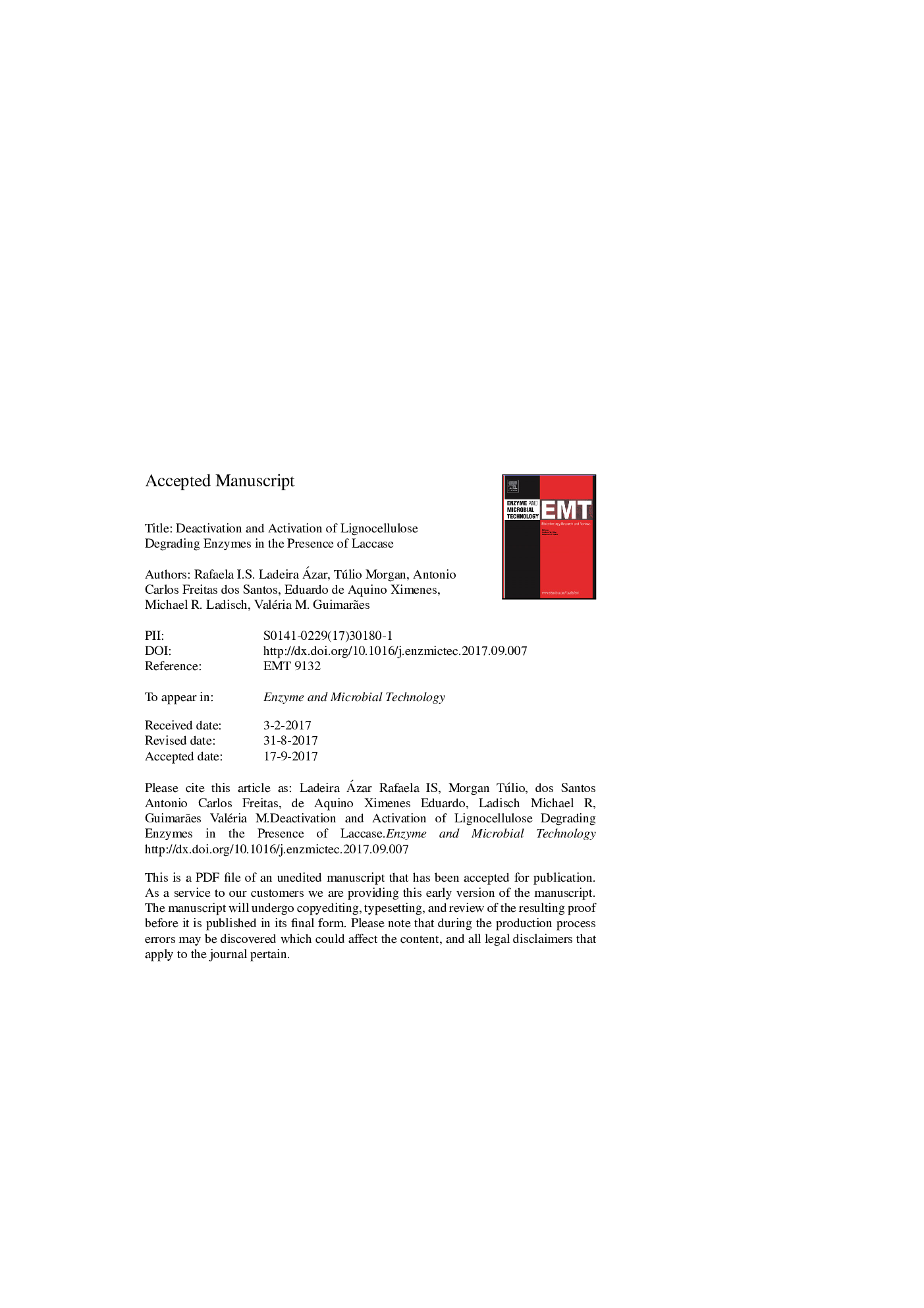| Article ID | Journal | Published Year | Pages | File Type |
|---|---|---|---|---|
| 6488196 | Enzyme and Microbial Technology | 2018 | 25 Pages |
Abstract
Cellulase and hemicellulase activities in a 1:1 ratio of enzymes extracted from Chrysoporthe cubensis and Penicillium pinophilum were evaluated in the presence of known monocomponent phenolic inhibitors and also with phenol mixtures derived from alkali pretreated sugarcane bagasse. The cellulolytic activities from C. cubensis:P. pinophilum displayed a much higher tolerance to phenolic inhibitors than equivalent enzyme activities obtained from Trichoderma reesei and Aspergillus niger. Enzymes from T. reesei and A. niger were deactivated at 0.3 and 1.5Â mg phenols/mg protein, respectively, as reported previously, while enzymes from C. cubensis:P. pinophilum resisted deactivation at 35Â mg phenols/mg protein. However, tolerance of xylanase with respect to phenols required the presence of laccase. Removal of laccase (enzyme) activity using sodium azide resulted in a 2x higher xylanase deactivation (from 40% to 80%). This paper identifies enzymes that are phenol tolerant, and whose adoption for lignocellulose hydrolysis could contribute to reductions in enzyme loading needed to hydrolyze alkali pretreated lignocellulosic substrates in the presence of lignin derived phenols.
Related Topics
Physical Sciences and Engineering
Chemical Engineering
Bioengineering
Authors
Rafaela I.S. Ladeira Ázar, Túlio Morgan, Antonio Carlos Freitas dos Santos, Eduardo de Aquino Ximenes, Michael R. Ladisch, Valéria M. Guimarães,
